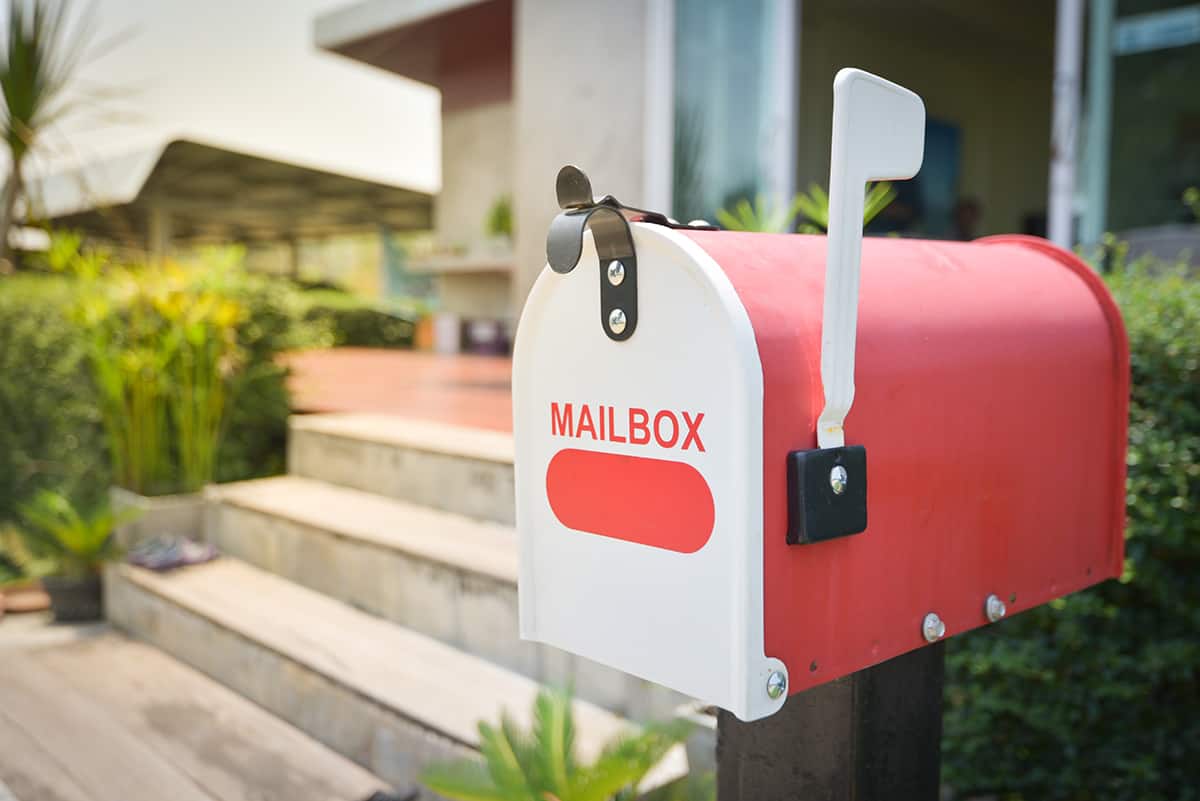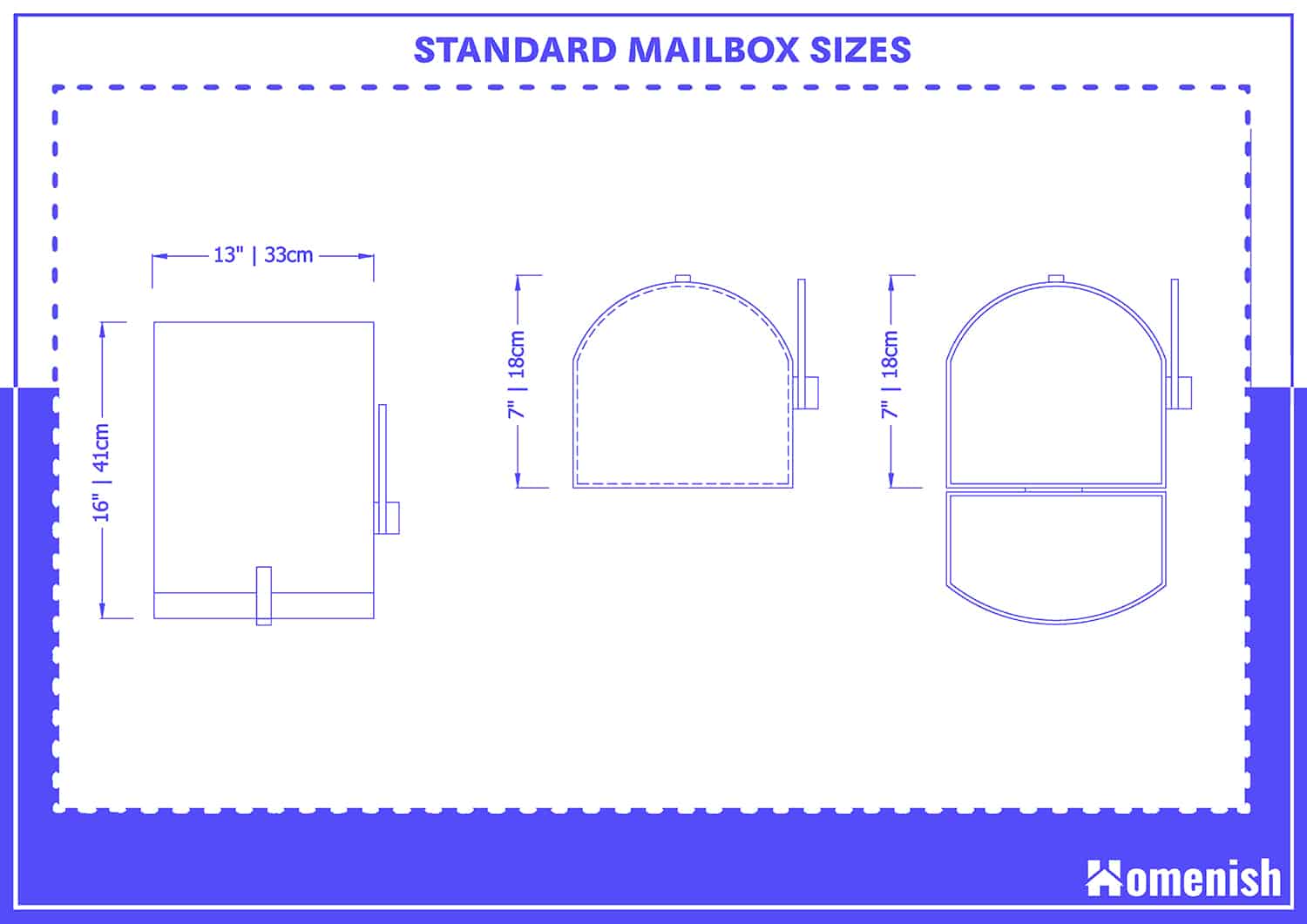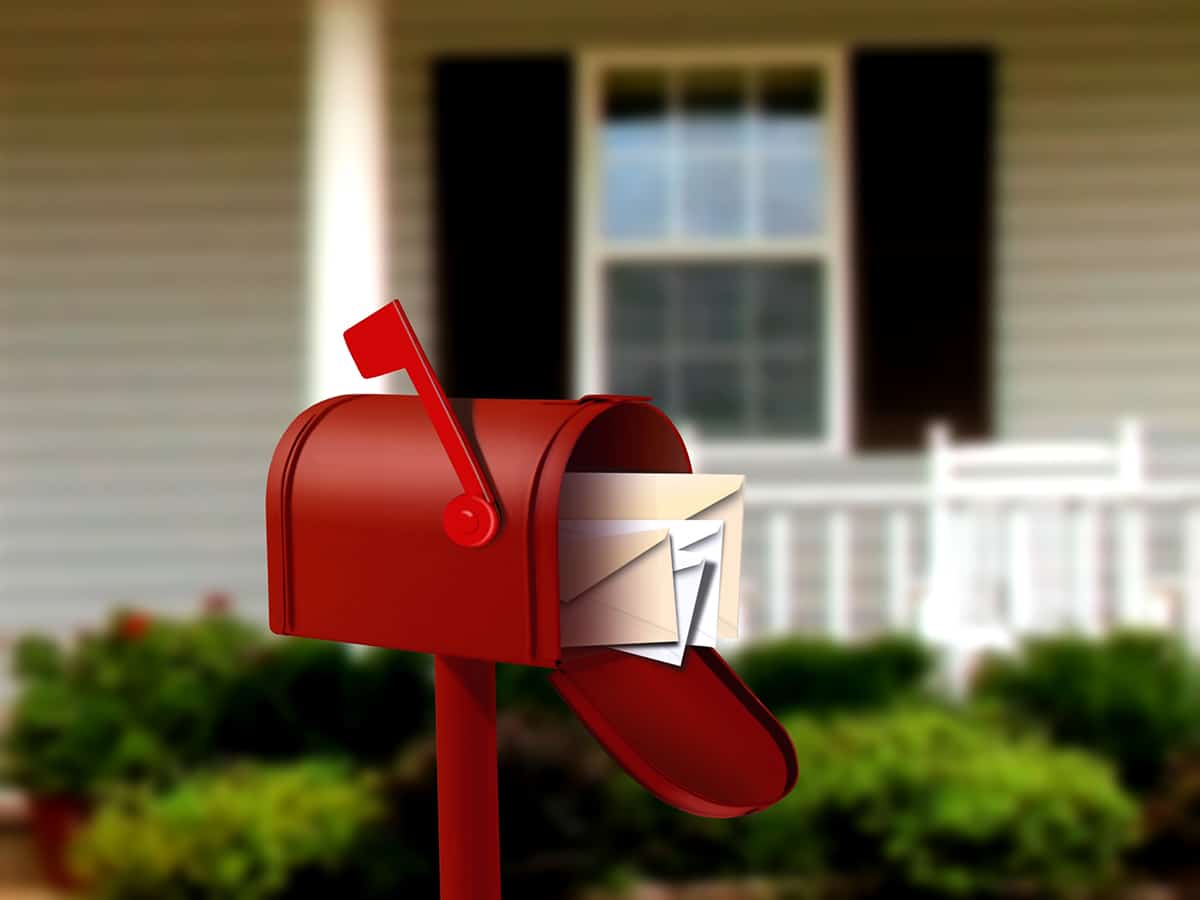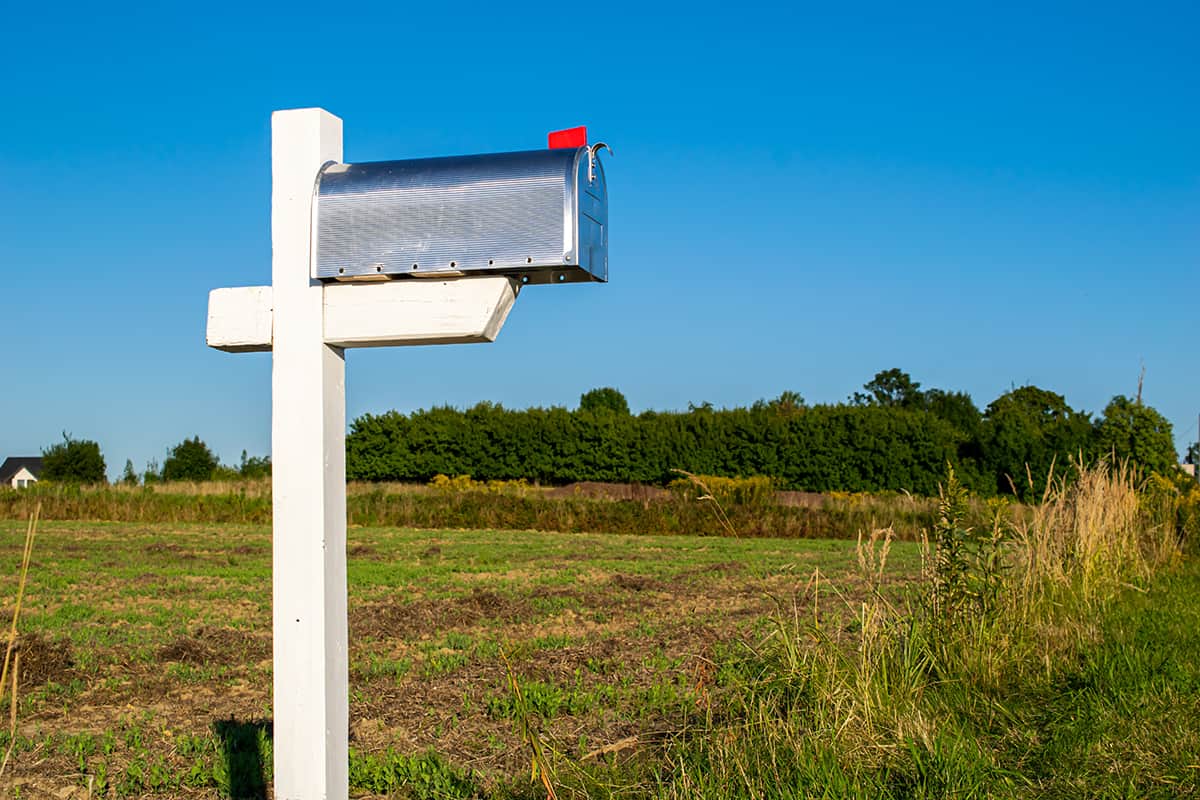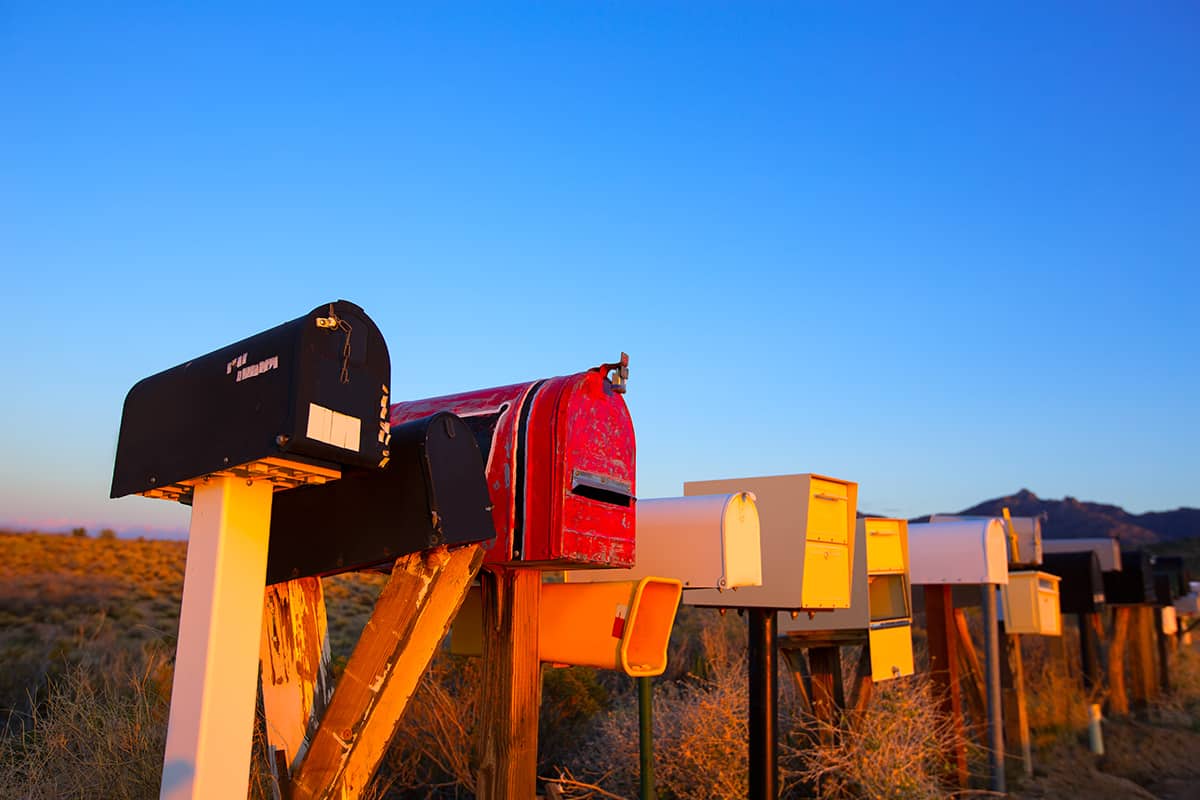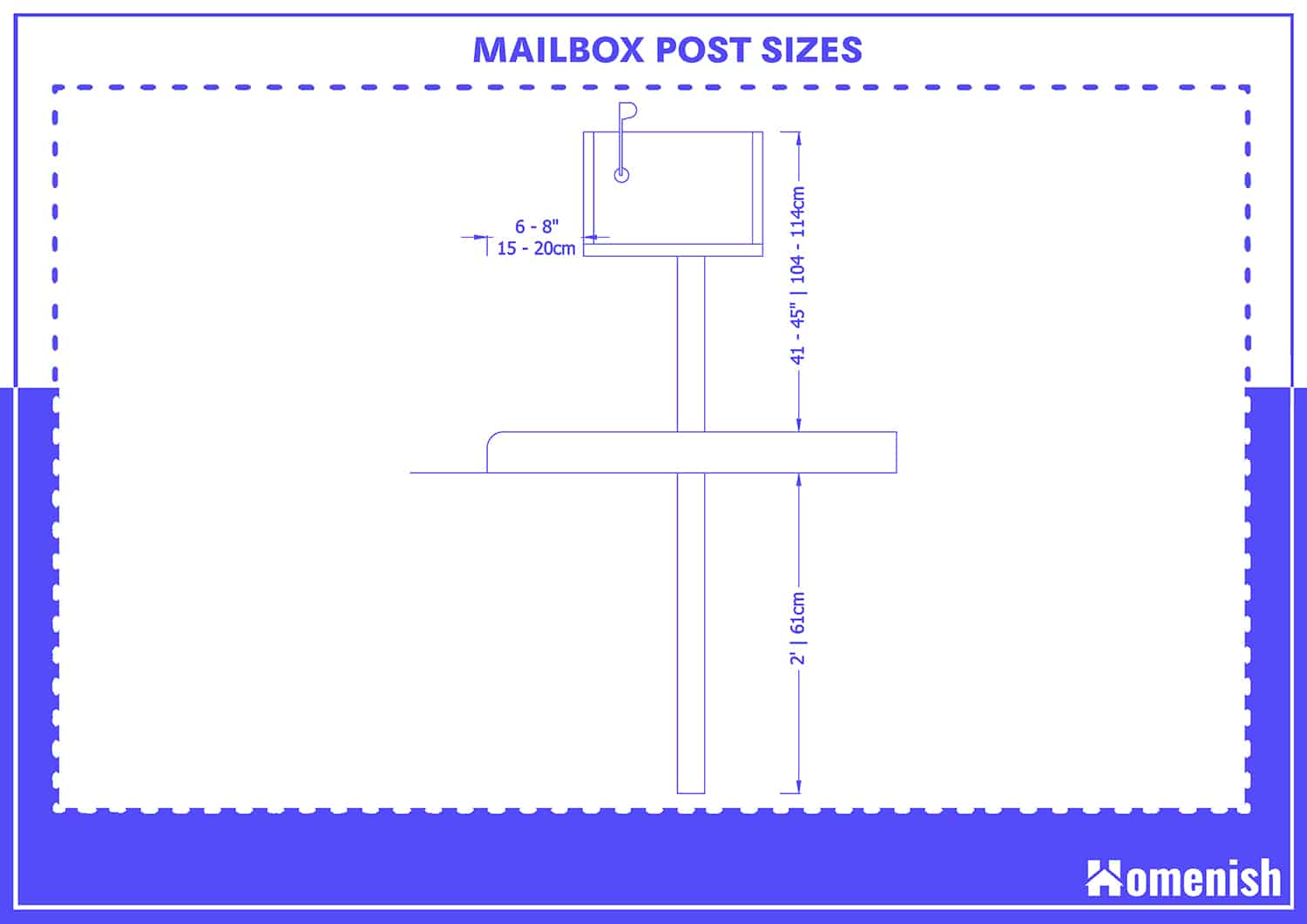There are specific regulations set by the USPS which have to be adhered to when it comes to mailboxes. Mailboxes should be made to fit with the most recent rules as set out by the USPS, the latest of which was the USPS-STF-7C directive outlined in 2015.
Learn more below.
USPS Regulations For Mail Box Sizes
Mailboxes in the US need to meet certain requirements.
According to the USPS-STF-7C directive outlined in 2015, any curbside mailbox, whether rural or in a city, must be able to accommodate a test parcel that measures 7 inches high, 13 inches wide, and 16 inches deep.
Locking mailboxes must also be able to pass a 3-minute test, whereby commonly available tools such as a pry bar would be unable to access the mail in the box. Mailboxes that do have locking mechanisms must be able to have mail deposited inside them without the mail carrier requiring a key or a code.
The directive set by the USPS sets out the minimum size requirements, but there are no maximum size requirements, so the homeowner can make a personal judgment as to how big their mailbox is, as long as it meets the minimum sizing.
Mail Amount
When considering which size of mailbox to get, think about how much mail you typically receive and how often you check your mailbox. If you frequently order parcels, then a larger mailbox is going to be more useful, but if you are not a big online shopper and instead mostly just receive bills and bank statements, then you won’t have the need for a big mailbox.
If you check your mailbox regularly, then a mailbox of minimum size will probably be adequate. However, if you frequently travel for work or have a situation where your mail is able to stack up in your mailbox, then you might want to consider a bigger box, so it doesn’t get jammed full.
Visibility
The size of your mailbox can be important for visibility, especially if your property is very rural. A bigger mailbox is going to draw more attention and help people locate your address.
This is helpful not just for your mail carrier but also for anyone else, such as visiting family to find your home. A larger mailbox will allow you to display a larger street number on it, which will be easier to spot for passers-by. When trying to find an address, most people will use the numbers on people’s mailboxes to help them figure out where on the street they are.
Conformity
If you live in a residential area where there are lots of homes on the street, then you may want to take notice of the size of your neighbors’ mailboxes before you make a decision for your own.
If the whole street has got mailboxes of a similar size, then your mailbox might look awkward if it is significantly bigger than all the rest.
Mailbox Post Size
As well as the mailbox itself, there are guidelines for the mailbox post size, which the mailbox is supported. The Federal Highway Administration suggests that a pole must be strong enough to support the mailbox, but it should fall or bend if hit by a car so as to prevent injury to the public. Posts made from concrete or heavy metal are disallowed, and instead, 4×4 wood is recommended, or 2-inch diameter aluminum pipe.
The pole should be buried at a maximum of 2 feet in the ground and set back between 6 and 8 inches from the curb. The height of the post should be between 41 and 45 inches from ground level. This means that the bottom of the mailbox, or the mailbox opening, should sit at this distance from the ground.
Historic Mailbox Sizes
Since the United States Postal Service (USPS) began delivering rural mail in the late 1800s, mailbox size has been an ongoing issue. At first, as rural delivery was an experiment, customers made their own mailboxes out of old materials such as soapboxes or salvaged pieces of wood.
By the beginning of the 1900s, a committee appointed by the Postmaster General set out new rules regarding mailboxes. This stated mailboxes must be made of galvanized metal in order to protect mail from the weather and that they should measure approximately 6 inches by 8 inches by 16 inches.
In 1913, parcel post was introduced, which meant mailboxes needed to be bigger to accommodate parcels. The Postmaster General recommended a larger size, but this was not brought into action as a requirement until a few years later.
In 1916, two tunnel-shaped mailboxes were introduced, in a small size and large size, and it became a requirement that only mailboxes of these sizes were allowed to be installed on rural routes.
The small size was 18 ½ inches long, 6 ¼ inches wide, and 7 ½ inches high. The larger size was 23 ½ inches long, 11 inches wide, and 14 inches high. By 1929, due to the increase in the volume of parcel posts, the smaller of these two sizes were discontinued, and the larger mailbox (known as No.2) was the only approved box for new installations.
Throughout the 1950s, these regulations underwent minimal changes, and by the 1960s, they had been changed to minimum size requirements rather than set size requirements. The regulations surrounding material the mailboxes must be made from were also dropped, as many of the cheaper mailboxes were made from plastic by this time.
More recently, in 2002, regulations were changed, which applied to all new installations of rural and city curbside mailboxes. This detailed the minimum and maximum dimension sizes of a mailbox as being approximately between 18.5 inches to 23 inches in length, between 6 to 11 inches in width, and between 6 to 15 inches in height.
This has since been updated to regulations that state a mailbox must be able to accommodate a parcel measuring 7 inches tall, 13 inches wide, and 16 inches deep, but there is no set maximum dimension currently for mailboxes.
